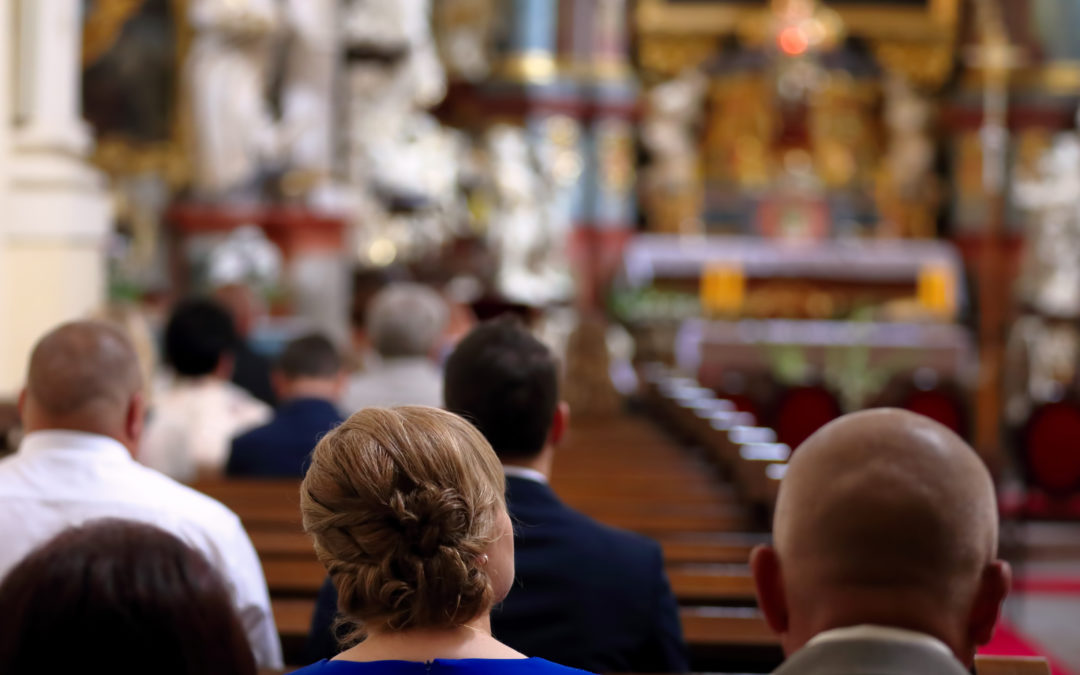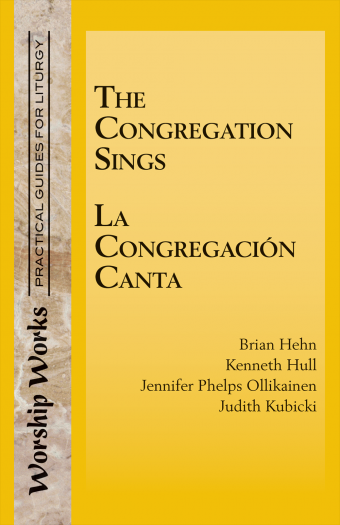As pastoral musicians, we are like curators of a vast and varied treasury of congregational song. That treasury includes texts and tunes from across centuries of the Church’s life that express the full range of Christian experience and represent diverse cultural and stylistic musical practices. Week by week, we select from out of this richness the songs and hymns that our congregations will sing, doing our best to make choices that are liturgically and pastorally appropriate.
In making these choices, we tend to focus first of all on the text. Are the words suitable for the function they will serve within the liturgy? Is the text seasonally appropriate, reinforcing the overall character of where we are in the liturgical year? How closely does the text reflect on the specific themes of the Gospel and other readings and prayers for the day? These are all important considerations in discerning what we will ask our congregations to sing. For when we make these decisions, we are asking worshipers to make these words their own while they are singing them, to identify fully with the thoughts and feelings that the words express.
But the reality is that music tends to play the dominant role in the text-music pairing. A good tune may make poor words singable, but the reverse doesn’t seem to happen: great words will be hampered by a bad tune.
The experience of text and tune
We experience texts through the music to which we sing them, and the music we sing will unfailing color the meaning of the words. Try singing the words of “Amazing Grace” to a different tune than the usual, such as ANTIOCH (“Joy to the World”). The experience this creates for the singer (after adjusting to the strangeness of the unfamiliar combination of text and tune) is very different from the familiar one.
When sung to the customary NEW BRITAIN, the words of “Amazing Grace” create a sense of comfort and consolation. They feel like a rumination on a past experience recalled with gratitude. But sung to ANTIOCH, “Amazing Grace” becomes a joyous extraverted celebration of an experience that seems to have happened only yesterday. There is a sense that what grace has done for us is so marvelous that it is almost unbelievable.
Because music has such power, because it can reach deeply into our emotions and senses, and because we identify ourselves with the songs we sing in the liturgy week by week, music is not only an expression of our faith, it also influences our faith over time. The music we sing is capable of forming us in profound and unconscious ways.
Becoming what we sing
I began by comparing pastoral musicians to museum curators. But in light of this power of congregational song to shape worshipers over time, a better comparison might be to a dietician. Just as it is said that “we are what we eat,” so it may also be true that to a significant extent we become what we sing. Just as a steady diet of one particular type of food to the exclusion of others may create an unhealthy imbalance for the body, so a reliance on a few types of music to the exclusion of others may create a kind of spiritual lopsidedness.
Once we become aware of music’s formative power we begin to see the question of musical style in a new light. As with the food we eat, the question of what styles of music to use in the liturgy cannot be considered as just a matter of preference or taste. The choices we make have potential long-term consequences that may not be immediately apparent but that build up over time to our benefit or detriment. This means that our role as pastoral musicians carries the responsibility of understanding the spiritual profile or character of our congregations, where they are strong, where the growing edges or underdeveloped capacities might be.
Let’s take the music of Taizé – or any music in which a few measures are repeated in a refrain or ostinato – as an example. These songs invite us to a contemplative attitude in our worship. The repetition of short musical phrases with unchanging texts for an unspecified length of time invites us to listen not so much to as throughthe music, to attend to the sense of presence within the liturgy. The simple and repetitive texts free the mind from doing the cognitive work that a more typical hymn text requires, and allow other parts of our awareness to move more deeply into listening for the presence of the Spirit in our worship.
On the other hand, hymn tunes based on folk songs – a centuries-old practice – often seem to have a certain earthy, grounded quality. They may “move us out of our heads” in a different way from repeated ostinatos. Where the former have a quality that seems to transcend the physical, many folk songs, because of their more robust, rhythmical character, resonate with the processes of the body. It is easy to imagine singing a robust folk-song hymn tune like KREMSER (“We Gather Together”) while walking outdoors.
The Spirit at work
I have use the word “invite” to describe how the music we sing may form us over time. That is because, unlike with the foods that we may eat in response to a dietician’s suggestions, worshipers have a role to play in how deeply and even whether or not the music they sing shapes them. We can reject what the music we sing offers us by ignoring it, or taking a critical, rejecting stance toward it. Or we can be open to allowing the Spirit to do her work through the music of our liturgies. It’s helpful here to think in terms of “affordances.” Music affords certain experiences to the listener; it makes them available to us. But we have to co-operate with the music in order to receive what the music has to give.
Refrain/ostinato and folk song are just two of the many musical styles represented in our repertoire of congregational song. Each one of these styles has its distinctive character, its particular “affordances,” which will invite distinctive responses from the singer. As pastoral musicians we need to work at discerning and becoming familiar with the formative potential of the various styles of music we employ so that we can be more intentional in choosing music that will contribute to forming congregations in helpful ways.
This article is an adaptation of a chapter from the following resource. For more information, click on the title or cover image.
The Congregation Sings/La Congregación Canta
Brian Hehn, Kenneth Hull, Jennifer Phelps Ollikainen, Judith Kubicki
001711
Authors Brian Hehn, Kenneth Hull, Jennifer Ollikainen, and Judith Kubicki, all experts in the field of congregational song, look at various aspects of singing together, including its therapeutic value and directions for the future. Part of the Worship Works series.



Recent Comments